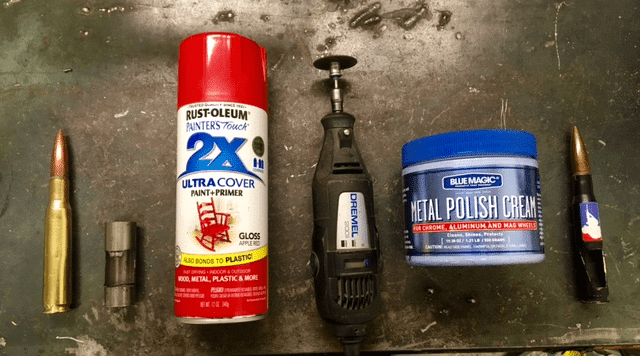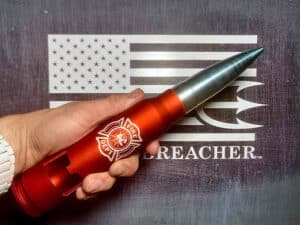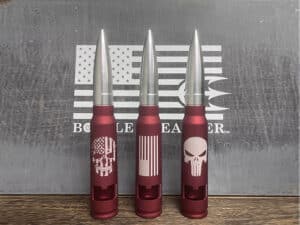
Have you ever wanted to take one of
the many amazing, and revolutionary ideas you’ve conjured up and turn it into a
multi- million dollar products or business?
I get asked all the time, “What do you think about this idea?” or “What
should I do next?” “Where can I get a prototype made?” “Should I apply for a patent and then start
selling or see if people buy the product and then make the investment on the
IP?” To my knowledge there is no blue print
or point by point procedure to successfully launch a product. I’m sure Entrepreneurs from all over the
world have done this every way imaginable and I’m sure your method will be as
unique as you are. I do not consider
myself an expert on new product development but I feel I have learned enough
since launching Bottle Breacher with a Dremel tool, some spray paint and a sticker
in my garage to give some broad stroke advice and lessons learned for those
looking to do this very thing. The
following thoughts might also shine a light on the fact that successfully
launching a product might be more difficult than you imagined and that maybe it’s
just not for you, but I hope that is not the case. I hope these are a few tools
you can put in your bag and things to remember as you start one of the
most exciting, challenging and fulfilling paths known to man.
CRAWL,
WALK, RUN. This is a saying that my staff probably hears
on a daily basis. When you develop new
products, you can spend thousands of dollars before knowing if your customers
will pull out their wallets and remove that all too often, illusive, green
paper that will ultimately tell us if our products are heroes or zeros. This is why it is so important to follow the
crawl, walk, run approach. The main
focus of this concept is not to go so fast that you miss the road signs and get
in way over your head. You need to start
by making your initial investment (dollars and time) in your new product as
minimal as possible. You need to PROVE YOUR CONCEPT. In common speak, prove that people are
willing to part with their hard earned cash for your brilliant idea early in
the process. All too often I see
entrepreneurs make this mistake right up front.
They completely skip the crawl phase and are off seeking capital and
investors without ever proving their concept because their grandmother and some
friends said it was a great idea. Some
people can give you all the data from complex surveys and consumer reports that
support their idea and will talk your head off about becoming multi-millionaires
after capturing a measly 1% of market share.
I personally know people, good people, who have several hundreds of
thousands tied up into a new product and their house as collateral before they
have 1$ in sales. This is a place I
never want to find myself.
In SEAL
training much of our training was very dangerous and dynamic. This is where I learned about the crawl,
walk, run approach. Blocks of training
would always culminate with a very realistic, high speed, training mission with
many operators moving, communicating and shooting. We had all sorts of vehicles from naval ships,
high speed boats and helicopters along with live breach scenes and active role
players. We never allowed platoons to go
into these dynamic environments without first practicing the crawl portion. In this case it meant the basic skills, like
fast roping and clearing buildings one at a time, in a day light, static
environment. Use your imagination for a
second and see the correlation. It’s
really all about minimizing your risk.
INTELLECTUAL PROPERTY.Applying for trademarks and
patents is something that should be done early in the process. How early is usually the biggest question. When
you are starting out you usually don’t have the budget to spend thousands on
trademarking and patents. I usually
recommend proving the concept first before applying for the legal protection
unless you have the capital and confidence in your product to do so. You have up to one year to apply for a patent
after you begin selling your product.
This is usually an ample amount of time to prove your concept. The dichotomy here is that you are exposing
your idea to others without the existence of a patent pending. This could make things more difficult for you
in court of law if anyone ever decides to rip you off and infringe on your
idea. Again, this is up to you. It will be one of the many large decisions
that you will need to get right if you want to continue towards success.
INSTINCT.I
wish there was a way around this one, but there really isn’t. To be good at product development you need to
have a combination of instinct, street smarts and the ability to quickly identify
winners and losers. I have many trusted
allies that are so much better than me in so many areas. They occasionally pitch me their ideas. At times I think to myself “did you really
just suggest that?” Knowing full well
that nobody would break out a shiny quarter for the stupid grenade they just
lobbed onto my desk. I constantly rely
on my instinct. Sometimes I’m right.
Sometimes I’m wrong. It’s all
part of the game. Your wins need to
exceed your losses and sometimes a product will hold water and need a revision
or two to join the winner circle, but
you have to be realistic and know that sometimes we all will miss the mark.
THICK
SKIN, BETTER HAVE IT.
We all love to hear about how great we
are. We love hearing that our ideas are
amazing and sure to be the next “big thing”.
The reality is this. If you are
smart enough to surround yourself with people who will give it to you straight
then you will get feedback that isn’t always what you want to hear. You will hear things like, “Its okay, but could
be even better it you changed this.” Or, “I don’t get it.” It’s too easy to fall
so in love with our own ideas that we block out any negative feedback. One of the best things you can do as a
product developer is to learn to watch people’s facial expressions when they
evaluate your prototypes and concepts. I
have learned that people are usually better at disguising their words than they
are their facial expressions. Are they
excited when they see it, does an instantaneous smile break across their
face? Or do they get a confused look on
their face like you just plopped a calculous problem in front of them? If you get enough of the frowny faces or
confused looks you probably have some tweaking to do. Don’t scrap it completely. Seek out that negative feedback and fix the
problems if possible. Again, this is
where your instinct will need to play a huge roll. If you know it’s a winner that needs work
keep at it. If you’re unsure about it
and continue to hit brick wall after brick wall, might be time to scrap it and
go back to the drawing board.
PATIENCE.This is one of the hardest things for me. I am a notoriously impatient person. I think many of us that have a passion for
designing are this way. For instance, I am still
working on one product that has been giving me fits for close to 2 years
now. The Bottle Breacher wine opener
that we launched last year took us nearly a year from prototype to production. There
were days and weeks that I thought to myself, “we may never go to production
with this thing.” It took close to 9
months to find a manufacturer that would make it in the USA for a reasonable
price. I believe that this is one of the
biggest failures of most entrepreneurs.
They want it now. When they don’t
get it they move on or lose interest. As
a young man I would have launched many of the products we have worked on far
before they were ready. Impatience and
failure to TE (test and evaluate) your product can be fatal to a product and
even your business.
RESILIENCE.
I believe this is the biggest attribute that a product developer can
have. Any developer that has been at it
for a good period of time is very familiar with Murphy’s Law which states
“Anything that can go wrong will go wrong.”
Just when you think your prototypes or even your first production run is
solid you will find out that too often there was something overlooked. Or that somebody in the production or
assembly chain cut a corner causing a failure which could prove to be
catastrophic in the launch. Remember,
you only get so many chances with your customers. Many times one disappointment is one too many
and your customer will move onto your competition. Two weeks ago, days before
launching our new Bottle Breacher BBQ tools. One of our team
members noticed that the weld connecting the steel rod from the .50 caliber
handles to the spatula broke during a photo shoot. I was very concerned when I got the news
because we were marketing these utensils as a very well made in the USA
product. As we started going through the
inventory our worst fears were realized.
Over 50% of the spot welds were busting and in some cases didn’t even
bond the 2 metal pieces together. These
welds were being done by a very good friend and well respected local
business. Turns out one of their
laborers was not only cutting corners during production but also not checking
his work. Thankfully the business stood
behind their work and fixed every unit with lightning speed. This isn’t the first time something like this
has happened and it won’t be the last.
If you want to be a great product developer you better be prepared to
put out large fires and think on your feet.
You had also better develop strong relationships with your vendors so
that they will step up for you in times of need.
TEST,
TEST, TEST SOME MORE.Had we done a better job of
testing we would not have run into this problem. We sell everything from Bottle Breachers to cozies, rings, apparel and more. You
would be surprised at how many things can go wrong with even the simplest item.
My attorney once gave me a very valuable
piece of advice. He said, “Eli when you
are making these products you have to visualize people doing the absolute
dumbest things possible with them and then suing you for not protecting them
from their own stupidity.” One time a buddy asked me why I had 10 rings on each
of my fingers. It wasn’t because I was
trying to look like some hard ass biker.
It was because it gave me the opportunity to test 10 units on my skin
for comfort and product defect.
Trust me I have screwed this up more than once. I have failed a couple times to do enough
testing on my products. The importance
of testing not only applies to making your product, but also selling it. When I first started selling my very raw,
first edition Bottle Breachers, I priced them at $27 a piece. Nobody was buying them; 2 weeks later I
dropped the price to $24. It worked, a
couple people actually purchased at that price. We left it there for a couple weeks and then
dropped for the second time to $20.
Boom, the flood gates opened and orders started pouring in. The lesson here is that sometimes it isn’t your
product. It’s your pricing. Test your customers reactions, test the
durability and functionality of the product, and test your pricing.
As I said, there is
no blue print or exact science to product development that I am aware of. I know there are many out there who have
fine-tuned their product development departments and could teach me a thing or
two. These are just a few lessons that
we have learned along the way and I felt compelled to share them because I know
many of you have great ideas and often wonder if it could be something more
than just an idea. Maybe it could be the
next big thing. But if you never start
and are too afraid to fail, then you don’t have a chance. You will wind up like every old story teller
who sits around wondering what might have been.
You’ve got to start somewhere; don’t forget to Crawl, Walk, and then
maybe, just maybe, you will be able to Run.




